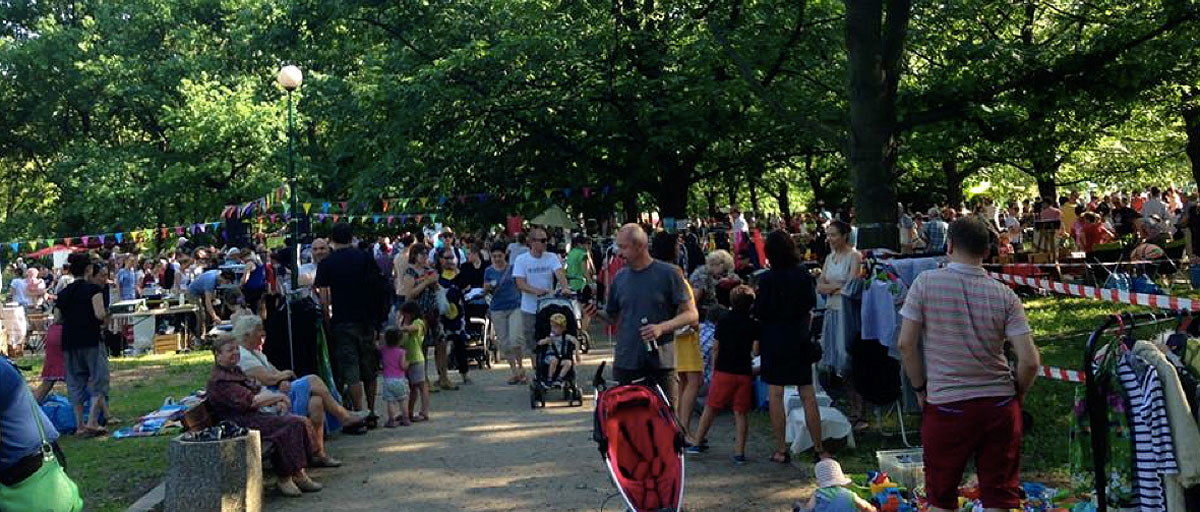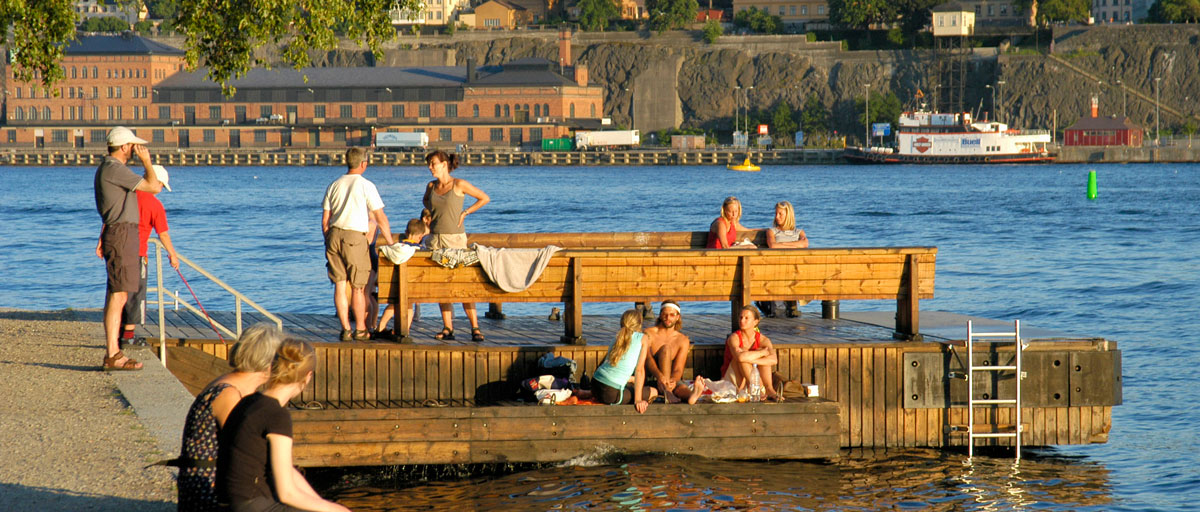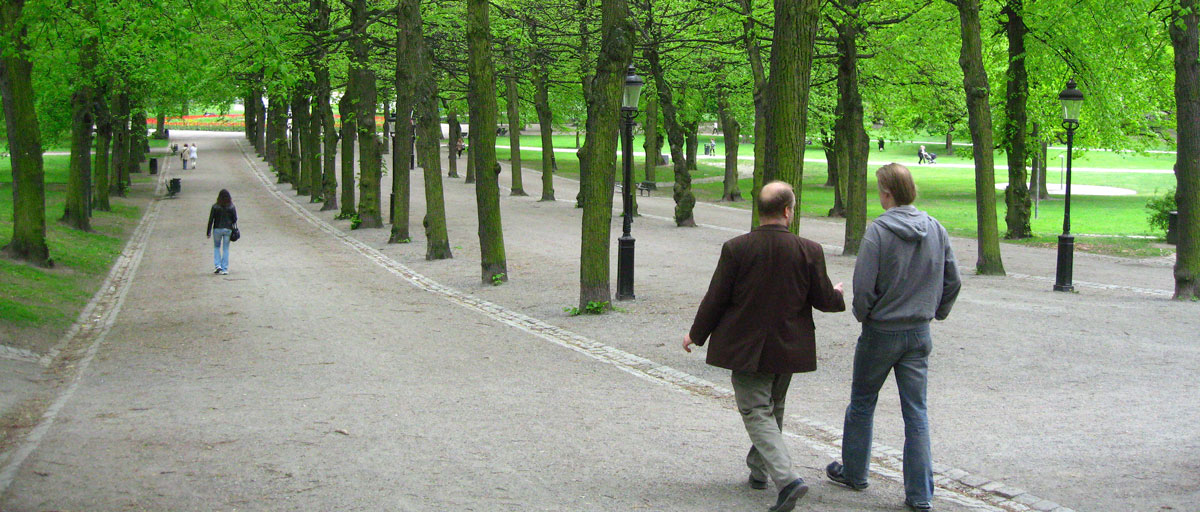Bildtext får vara max två rader text. Hela texten ska högerjusteras om den bara ska innehålla fotobyline! Photo: B. Christensen/Azote
URBAN PLANNING
Why nature, community and place motivate urbanites to act for a desirable environment

Using Warsaw, Poland, as a case study, researchers shed light on the motivations behind green area stewardship in post-communist countries of Europe. The authors uncover what drives civic engagement for the preservation of the city’s natural capital. Photo: O. Sąsiedzi
- Article sheds light on the motivations behind green area stewardship in post-communist countries of Europe
- Nature, community and place come together to form the common vision “Countryside within a city”
- The researchers identify three reasons why people in Warsaw are taking action
In Warsaw, residents determined to avoid spatial chaos of the past mobilize to avoid environmental chaos in the future
“COUNTRYSIDE WITHIN THE CITY”: In an increasingly urban world, people are finding themselves alienated from sensory interaction with the natural environment. As a widespread ecological amnesia dawns over human populations living in dense urban areas, active engagement to protect, restore, and create green areas is gaining momentum.
Using Warsaw, Poland, as a case study, Joanna Sanecka, a former centre student, together with centre researchers Stephan Barthel and Johan Colding shed light on the motivations behind green area stewardship in post-communist countries of Europe.
Their work, published in Sustainability, focuses on people taking part in bottom-up initiatives such as the creation of community gardens. The authors uncover what drives civic engagement for the preservation of the city’s natural capital.
They conclude that nature, community and place come together to form the common vision “Countryside within a city” and motivate individuals to act for a desirable urban environment.
"Countryside within the city” is vison of developing a country-side environment in the middle of the city where people can have more profound contact with nature.
Joanna Sanecka, lead author
From “spatial chaos” to organized civic engagement
The city of Warsaw was almost completely destroyed during WWII. Rebuilding the city from ashes took decades, and the ensuing events left a profound mark on the spatial organization of the city.
The Soviet occupation brought along the communist ideology, and freedom regained in 1989 a period of unregulated development and poor planning. Both are reflected in Warsaw’s urban landscape, qualified by some residents as being in a state of “spatial chaos”.
Today, however, an increasing number of residents are determined to take things into their own hands to avoid this spatial chaos from developing further into environmental chaos.
Discontent about the lack of consultation processes, willingness to prevent air pollution, desire to provide habitat for birds and to safeguard plant species related to childhood memories, are only some of the factors inspiring civic engagement.
Nature, community and place
Sanecka and her colleagues identify three reasons why Varsovians are taking action:
- Willingness to experience nature in a more tangible way by protecting, enriching, and maintain urban nature
- Willingness to prevent alienation and loneliness in urban environments by creating communities
- Desire to protect and create places for recreation, relaxation, experimentation, and where children and adults alike can feel safe and at ease
These combined aspects create the basis for a shared, futuristic green vision of the city, what the researchers call “Countryside within the city”.
"“Countryside within the city” is vison of developing a country-side environment in the middle of the city where people can have more profound contact with nature, enjoy being a part of a community in planes like a community garden or a local park, Sanecka says.
She believes these kinds of environments may have a transformation power and lead to more sustainable urban environments.
%20Warsaw%20%20Graphical%20Abstract%20%20Illustration%20Dennis%20Wojda.jpg)
Illustration: D. Wojda
Methdology
The first step in data collection involved a pilot study with the aim to learn about the field, which included mass media analysis, social media analysis and pre-study interviews with city officials and three NGO representatives. This pre-study allowed for identification and selection of stewardship initiatives to be studied deeply with a grounded theory approach.
Out of a total of 26 interviews conducted, 16 in-depth open-ended interviews with key informants were selected to be thoroughly analyzed using the grounded theory methodology. The interviews were transcribed and coded with open codes emerging from the data. These were first analyzed using line-by-line coding which answers questions such as “What is the motivation behind the action?”, and a second cycle of analysis allowed the identification of the most recurring themes such as “relaxing through being in nature”, “wanting to be part of the community”, “having access to a safe space”. Constant comparison between codes and data, and memo writing allowed for reflecting on emerging concepts and connections between them.
Sanecka, J., Barthel, S., Colding, J. 2020. Countryside within the city: a motivating vision behind civic green area stewardship in Warsaw, Poland. Sustainability

Joanna Sanecka is a former Master's student at the centre. She also has a sociology background and works as a journalist.










